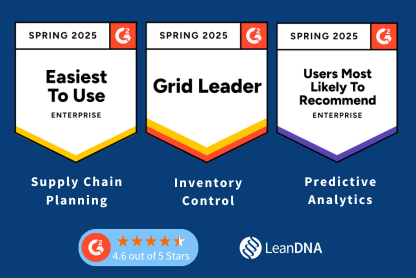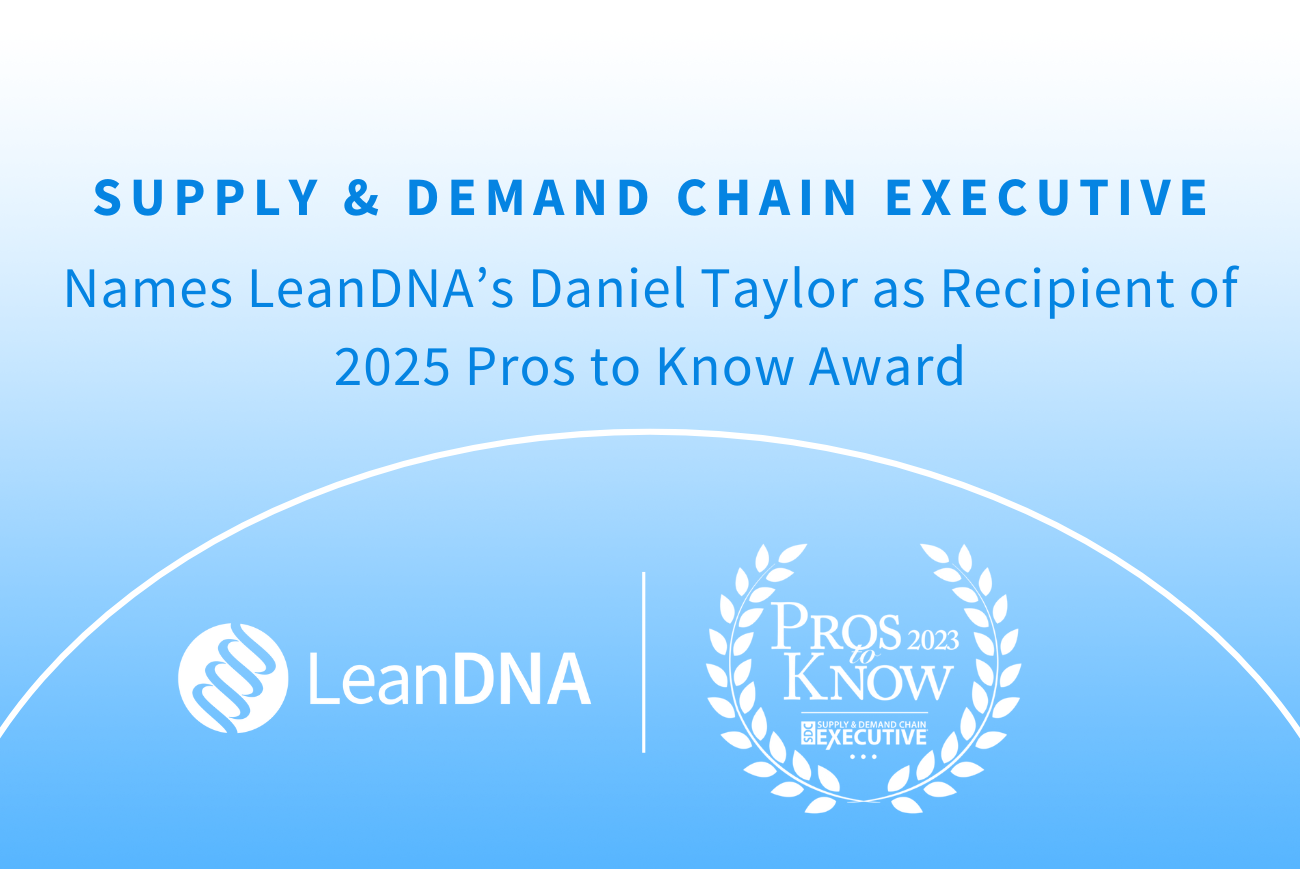Supply chain operations can no longer be viewed solely as a cost center—they are a strategic function that drive top line business outcomes. But how can supply chain practitioners elevate their role within the organization and ensure themselves and their teams have the support needed to deliver impact?
In a recent fireside chat, Swetha Reddy, VP of SIOP & Materials at Duravant, and Mike Kienitz, CSCO at Signia Aerospace, tackled this question head-on. Their conversation explored how supply chain teams can shift the perception from cost center to value creator, align with broader business goals, and stay ahead of disruption.
Cost Center vs. Value Creator? Changing the Narrative
The perception of supply chain within the C-suite remains a challenge—88% of supply chain leaders say their executives still see supply chain as a cost center [Ernst & Young]. However, data tells a different story: 79% of companies with high-performing supply chains achieve above-average revenue growth [Deloitte].
Supply chain leaders must clearly articulate their impact by translating supply chain metrics into business metrics that directly demonstrate value to the organization.
It’s essential to bridge traditional supply chain metrics—such as cost reduction, inventory levels, and on-time delivery (OTD)—with overarching business objectives. Procurement-specific metrics, like purchase price variance (PPV), should also align with financial and operational goals. Leaders must communicate how supply chain decisions—such as optimizing logistics networks or investing in new technologies—directly contribute to revenue growth and customer satisfaction. For example, a VP of Supply Chain at a global discrete manufacturer is evaluating whether to invest in AI-driven inventory optimization software. Instead of framing the decision purely in operational terms, they align the impact with broader business objectives:
- Operational View: “Implementing AI-powered inventory management will improve material availability and reduce excess stock.”
- Business-Aligned View: “By reducing shortages by 25%, we can improve on-time delivery, strengthen supplier relationships, and unlock $50M in working capital—directly supporting revenue growth and increasing customer retention.”
Supply chain sits at the intersection of sales, operations, and engineering, making it a key driver of business success. Rather than focusing on supply chain-specific KPIs alone, leaders must demonstrate how their work contributes to revenue, EBITDA, cash flow, and operational efficiency. As Swetha put it, “If you work in industrial manufacturing, the supply chain is the business.”
Preparing for an Uncertain Future: Challenges and Opportunities
With an increasingly volatile global landscape, supply chain leaders must take a proactive approach. They must anticipate both challenges and opportunities in the near and long term, including:
-
- Ongoing Disruptions: From geopolitical shifts to technological advancements, the supply chain is in a constant state of change. Swetha emphasized that leaders can’t wait five years for a strategy—they need solutions in place now.
- Talent and Leadership: Talent development plays a critical role. Supply chain professionals must cultivate both technical expertise and soft skills (e.g., negotiation and relationship-building). Encouraging lateral moves and cross-functional experiences can create more well-rounded leaders.
- Technology as an Enabler: AI, data analytics, and visibility tools like LeanDNA empower supply chain teams to make more strategic, informed decisions. Mike noted that the key to navigating disruption is having a strategy that allows for adaptability—rather than reacting to every challenge, teams should be positioned to tweak their approach when necessary.
- “Secret Sauce”: Swetha explained that your “secret sauce” is your suppliers. “They're facing the same challenges and disruptors we are. But they are our partners. If we can build more partners, you're leveraging brainpower, resources, abilities, competencies. And that's the secret sauce. That's how we differentiate ourselves from our competitors."
Developing strong supplier partnerships allows manufacturers to mitigate the impact of external disruptors while enhancing mutual success. As Swetha noted, the key question becomes: How do we partner with suppliers for our benefit, but also for their benefit? Helping suppliers develop their own capabilities and navigate shared challenges will be a defining factor in supply chain resilience over the next few years.
Elevating the Role of Supply Chain in the Business
To shift the perception of supply chain from a cost center to a strategic function, leaders must focus on 3 critical elements:
1.Speaking the Language of the C-Suite: Instead of discussing projects in isolation, tie them directly to core business objectives like revenue growth, profitability, and customer satisfaction.
-
- Frame supply chain initiatives in financial terms – Instead of saying, “We reduced inventory by 15%,” say, “We freed up $20M in working capital, improving cash flow and allowing reinvestment in strategic initiatives.”
- Connect supply chain improvements to revenue growth – Highlight how better demand planning and supplier performance increase on-time delivery, leading to improved customer retention and higher sales.
- Use data-backed storytelling – Present case studies, competitive benchmarks, or customer impact metrics that clearly demonstrate ROI.
- Be proactive, not reactive – Don’t just report on cost savings; tie supply chain efficiency to market expansion, product launches, or risk mitigation.
2. Developing a Strategic Mindset: Supply chain professionals must understand their organization’s broader goals and position themselves as business partners, not just operational managers.
-
- Understand how supply chain impacts the broader business – Know key company metrics beyond supply chain KPIs, such as EBITDA, revenue per unit, and cash conversion cycles.
- Align with executive priorities – If leadership is focused on global expansion, highlight how supply chain agility supports scaling into new markets.
- Anticipate challenges, don’t just react – Use predictive analytics and scenario planning to prepare for disruptions before they happen.
- Be a business partner, not just an operations manager – Collaborate with finance, sales, and product development to align supply chain strategies with corporate growth objectives.
3. Building Stronger Partnerships: Suppliers face the same challenges as manufacturers, and fostering collaborative relationships will be a critical differentiator in the coming years.
-
- Move from transactional to strategic supplier relationships – Instead of just negotiating price reductions, collaborate on joint cost-saving and innovation initiatives.
- Share demand forecasts and risk data – Provide visibility into future production schedules so suppliers can better align capacity, reducing shortages and delays.
- Incentivize performance improvements – Establish supplier scorecards that reward reliability, flexibility, and responsiveness, rather than just cost-cutting.
- Leverage technology for real-time collaboration – Get out of excel and use intelligent cloud-based tools that allow suppliers to update commitments, share constraints, and proactively adjust delivery schedules.
Looking Ahead: The Future of Supply Chain Leadership
Disruptions will continue to evolve, but the supply chain’s role as a business driver is more critical than ever. Leaders who embrace technology, invest in talent, and align their work with business strategy will position their organizations for long-term success.
Supply chain is the intersection of every function in the business. If we want to lead, we must understand how all these functions connect—and make sure our teams are ready to evolve.
If you missed the webinar, you can watch the on-demand recording. It’s packed with insights from these innovative supply chain leaders.
Ready to take the next step? Contact us to learn how LeanDNA can support your journey towards a more efficient supply chain.



